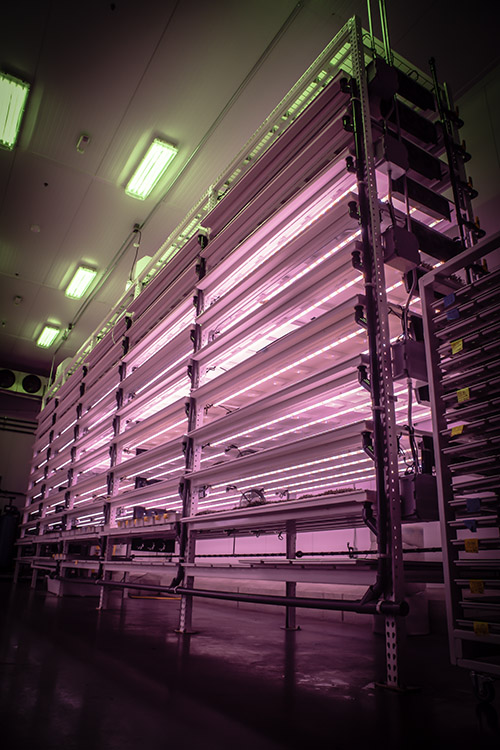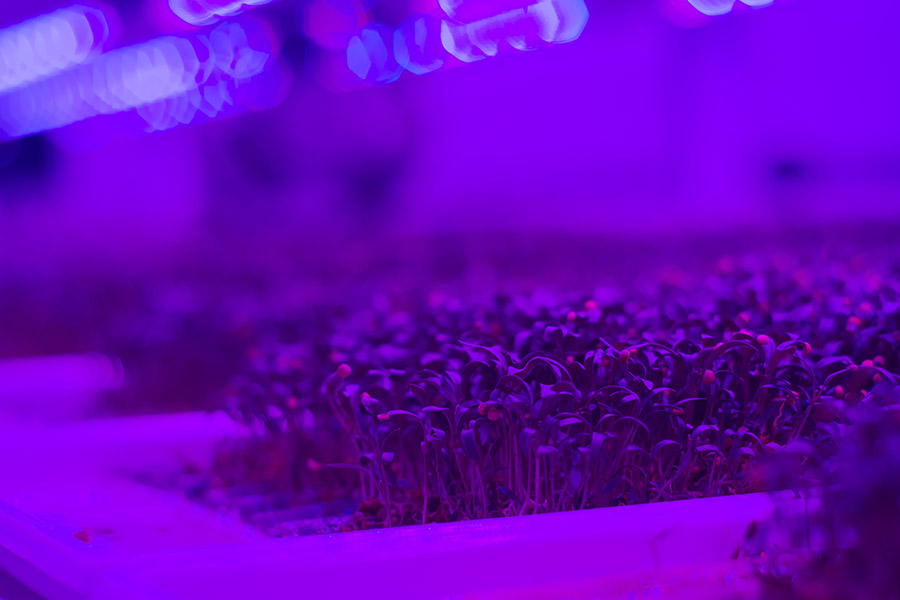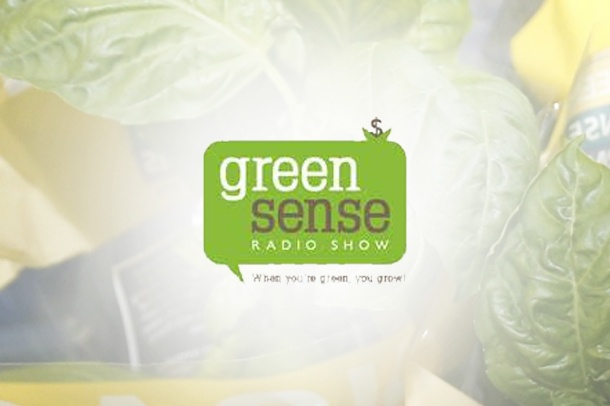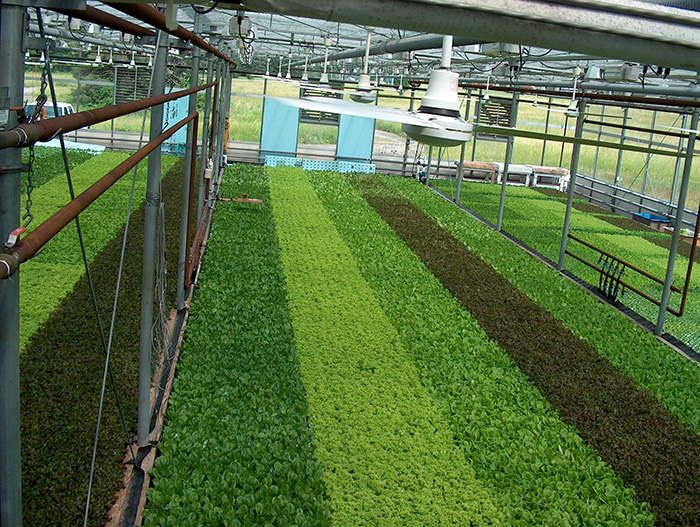When choosing horticultural lighting, growers need to consider lighting efficiency and how the lighting will be used.
There is a big difference between lighting efficiency for horticulture and lighting efficiency for consumer use. The difference is in who is receiving the light.
“From a human perspective since the early 20th century there was a number of researchers who studied how sensitive the human eye is to the light wavelengths,” said Eden Dubuc, technology leader at Current, powered by GE. “It was discovered that there are receptors in the eyes that collect blue, red and green light. The human eye is most sensitive to yellowish-green light, around 550 nanometers (nm). The reason that humans are really sensitive to this light is because they need to identify good plants as a source of food.
“This color sensitivity of humans varies depending on gender, age and location on the Earth. In order to standardize light measurement, scientists developed a sensitivity curve called a photopic curve that is based on statistical distribution from the world population.”
Dubuc said that it has only been since the 1970s that research has determined plant sensitivity to color. Plants absorb mostly light energy in the range from 400-700 nm, which is defined as photosynthetically active radiation (PAR).
“If white light, which is broad spectrum, is directed at plants, they appear green,” he said. “Plants absorb most of the red and blue light to activate photosynthesis. If a grower wants to create biomass, then blue and red light are the most sensitive to the plants to convert energy in the plants. Even though the ultraviolet (less than 400 nm) and far red (greater than 700 nm) are less useful to the plants for creating biomass, there are some benefits to other aspects of the plants.”
Determining lighting efficiency
Dubuc said lighting efficiency is related to how much electricity goes into the lighting fixture or luminaire and the amount of energy that comes out.
“If 1 watt of electricity is put into a luminaire and 0.5 watt of light comes out, then there is 0.5 watt of heat generated by the luminaire,” he said. “In some luminaires the energy can also be mechanical energy if there are moving parts. If a luminaire doesn’t use active cooling, there aren’t other ways of losing energy. Active cooling is not used in GE luminaires so the watts energy release is divided by two, a portion goes into light and a portion goes into heat.”

Photos courtesy of Farmbox Greens
Dubuc said the same thing happens to the electricity regardless of whether a grower is using a light emitting diode (LED) or high pressure sodium (HPS) luminaire.
“In a LED the light is mostly in the visible range,” he said. “With HPS there can be a lot of infrared radiation so there is heat radiation from the luminaire that has to be taken into account. Subtracting the amount of watts going into a luminaire from the amount of visible light coming out, everything else is heat, either radiation, convection or conduction.”
In regards to the lighting efficiency of luminaires, Dubuc said most growers are now talking about photon efficacy, which is micromoles per joule.
“Micromoles are the quantity of photons,” he said. “Micromoles per second divided by watts creates micromoles per joule, which is photon efficacy. This is an important value when growers are looking at luminaires. This is how growers can compare the efficiency of the luminaire including the ballast and reflector.
“If lighting manufacturers are talking about micromoles per joule, they are measuring the lighting efficiency the same way. If they are using the units, micromoles per joule, it is well defined.”
Dubuc said if growers are using fluorescent lamps, the efficiency is about 1 micromole per joule.
“For a 400-watt metal halide lamp the efficiency is around 1.3 micromoles per joule,” he said. “For a 400-watt HPS there are 1.65 micromoles per joule. For a 1,000-watt double-ended HPS lamp there are 1.85 micromoles per joule.”
Dubuc said for LEDs the efficiency can vary depending on the light color.
“Our GE pink lights have an average of 2.5 micromoles per joule and our purple can go up to 2.8 micromoles per joule,” he said. “Determining which lamp to use will depend on whether growers want a broader spectrum and if they want the light for the plants to be in a more reproductive or more vegetative state.”
Adjusting light spectrum to optimize growth
Dubuc said prior to the introduction of LEDs the only viable lighting options available to growers were HPS, metal halide and fluorescent luminaires.
“The only difference between HPS and metal halide is that there is a different gas in the tube or bulb,” he said. “When the gas mixture in the glass bulb is activated, then the HPS produces yellowish light. When more mercury methyl gas is introduced into a metal halide bulb, it produces a bluer light.
“There are a few companies that tried to tweak the chemical content in the bulbs to get optimized lighting for plants. But the variation is very limited. When researchers started working with LEDs and phosphor, they were able to create different colors and different mixtures. This is when people realized the potential of playing with the spectrum, with the color. LEDs have the full flexibility to optimize the growth of plants because growers have the ability to tweak the spectrum.”
Dubuc said changing the spectrum may change the photon efficacy.
“With white light the spectrum is broader and a broad spectrum means phosphor has been added,” he said. “When more phosphor is added then efficacy is lost. When only blue and red LEDs are used together there is no phosphor in the system. There are currently two efficient LED compounds on the market. InGaN (blue light with peak efficacy at 450 nm) and AllnGaP (red light at peak efficacy at 660 nm) are the most efficient wavelengths for LED technology.”
The ratio of red to blue light impacts the effect on plant growth.
“GE LEDs offer three ratios of red to blue light,” Dubuc said. “We call these reproductive (6:1), vegetative (1:1) and balanced (3:1). The 3:1 ratio has three times more red light energy than blue light energy. If a grower wants the plants to elongate, then more red light is used. Plants exposed to more red light will grow faster and bigger, but will be more fragile.
“Blue energy controls the structure of the plants. If a 1:1 ratio with as much blue as red is used, plants will be really strong, but short and compact. If growers alter the ratio of blue to red, they can control the structure or morphology of the plants.”
Depending on what a grower is trying to accomplish with the LEDs will determine the ratio of red to blue light.

“Usually light distributors like Hort Americas will guide growers on what type of light to choose,” he said. “GE creates the fixture based on what the growers and plant researchers are asking for. GE’s expertise is to make good luminaires and conduct the research with universities. Hort Americas staff can properly guide the growers as to what spectrum is best for their crops. These spectrums are based on the many experiments conducted by university researchers and commercial growers.
“Some growers prefer using a broader spectrum (white or pink) to purple light because white light is human friendly. When choosing lights, it has to be taken into consideration whether there will be humans working in the environment. However, using a broader spectrum impacts the efficacy of generating biomass.”
This article is property of Hort Americas and was written by David Kuack, a freelance writer from Fort Worth, TX.





